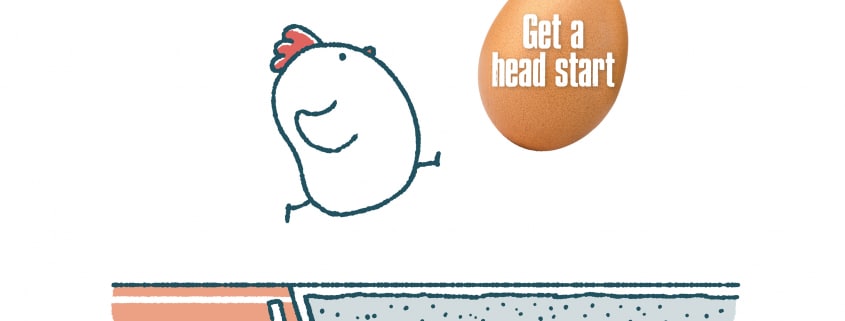Early laying period – off to a good start in laying hens
The early laying period plays an important role in how a flock will perform and how long laying hens can be kept in production. So, getting hens off to a good start in lay is key to feeding strategies aimed at extending laying cycles. Feeding for adaptive capacity can be a great facilitator to give your laying hens a head-start in the pre-peak phase.
by Gwendolyn Jones, Product Manager Gut Agility Activators
500 eggs in one laying cycle is within reach
Prolonging the laying cycle balances the costs of egg production (e.g. price of pullets and feed) by the earnings of a longer productive period. On top of that it reduces the frequency required to replace hens and to clean houses. As a result of that producers are now aiming to extend the laying period beyond 72 weeks of age. But it is not just to improve the economics of production, it also makes sense in terms of reducing the environmental impact of egg production for more sustainable egg production. Some breeding companies are already reporting flocks with egg production cycles of 100 weeks producing more than 500 eggs. Schothorst Feed Research reported that a flock of Dekalb White hens produced 510 eggs per hen in 100 weeks in October last year. While improved genetics facilitate such ambitious goals, it goes without saying that the right management and nutrition play an important supporting role in this too.
Importance of pre-peak challenges for extended laying periods
The pre-peak period of the laying cycle lasts from the time when hens arrive at the production house (15-18 weeks of age) until the age the laying hens reach peak egg production (24-26 weeks of age). This is a very challenging period for the hens, because they are still growing while they are starting to produce eggs. On top of that the hens are going through many other changes as they transition from rearing pullet to production. This means that they have to adapt to new environments, diets, different lighting as well as having to go through the stresses of transportation. This can result in negative nutrient balances, which can affect performance but can also have longer-term effects for health and laying persistency if it negatively affects bone, liver metabolism and ovarian health. For example mobilization of calcium for eggshell formation from bone can lead to a reduction in skeletal mass of the hen and will reduce shell quality late in late lay. Increasing free radical production in the liver can eventually lead to fatty liver as a result of prolonged oxidative stress, which again can impair egg production and laying persistence. Missed targets in the rearing phase such as target body weight and high uniformity or stressors such as high temperatures and mycotoxins can amplify potential problems.
Feeding for adaptive capacity of hens in the early laying period
To get the laying hens off to a good start at the beginning of the laying period and to correct the effects of suboptimal rearing, nutrient intake should be maximised to prevent the mobilisation of body nutrient reserves at the start of the lay period. This also means that any impact environmental or nutritional stress factors may have on feed intake needs to be minimized. Stress reactions such as oxidative stress, reduced gut integrity and reduced feed intake can all contribute to negatively impact the resilience of the laying hen and can thus further diminish the chances for producers to successfully extend the laying period.
For example oxidative stress will affect the functioning of the liver and hence the ability to maintain high egg laying rates and egg quality over time. Furthermore oxidative stress can also lead to accelerated aging of the hen’s ovaries reducing the capacity to maintain high egg production and egg quality over longer laying cycles. High gut integrity in the duodenum is crucial to maintaining egg shell quality in longer laying cycles as it is the main site for absorption of Ca and P.
The gut agility concept in Anco FIT Poultry was specifically developed to increase the capacity of the bird to adapt to challenges more efficiently and to minimize responses at the cellular level that would otherwise reduce the hens’ performance and potential to sustain longer laying cycles.
Related articles
Discover Pancosma Gut Agility Activators
Effects of a gut agility activator on egg production in layers



